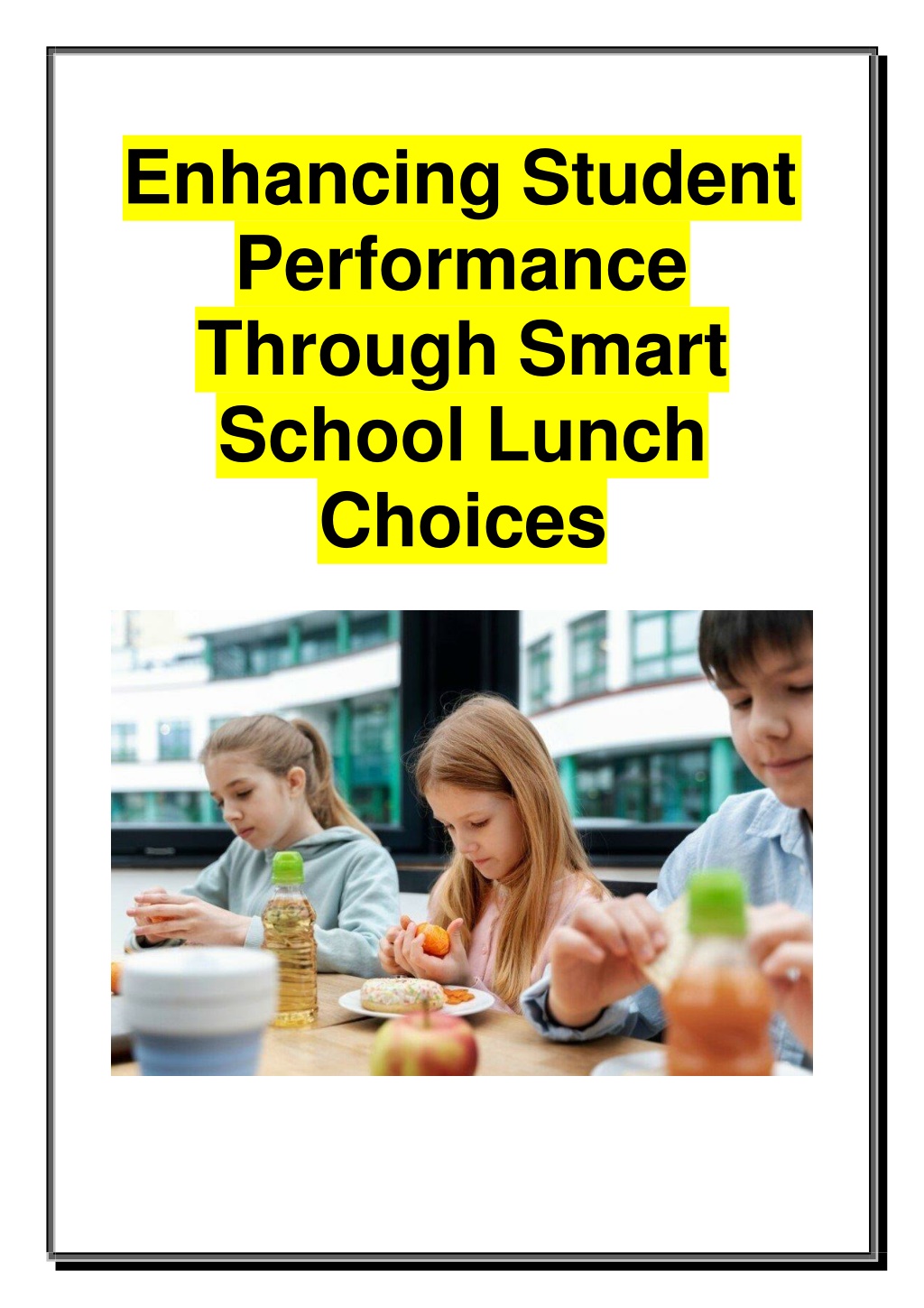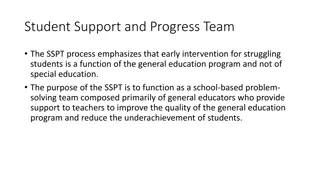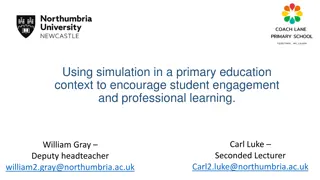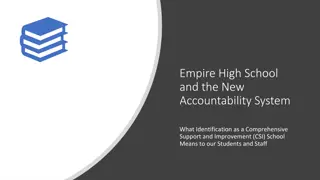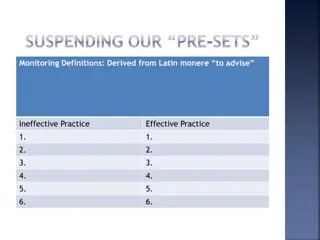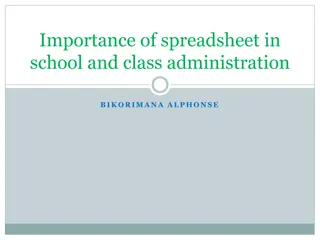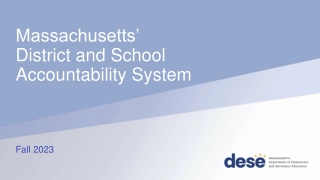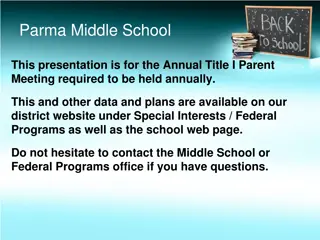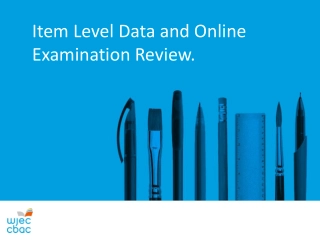Enhancing Student Performance Through Smart School Lunch Choices
In the pursuit of academic excellence, one often overlooked aspect is the role of nutrition in enhancing student performance. A well-balanced diet is crucial for cognitive development and overall health, making smart school lunch choices essential. By understanding the importance of nutritious meals and implementing strategies to provide healthier options, schools can significantly impact their studentsu2019 academic success and well-being.
Uploaded on May 27, 2024 | 1 Views
Download Presentation
Please find below an Image/Link to download the presentation.
The content on the website is provided AS IS for your information and personal use only. It may not be sold, licensed, or shared on other websites without obtaining consent from the author. Download presentation by click this link. If you encounter any issues during the download, it is possible that the publisher has removed the file from their server.
Presentation Transcript
Enhancing Student Performance Through Smart School Lunch Choices
In the pursuit of academic excellence, one often overlooked aspect is the role of nutrition in enhancing student performance. A well-balanced diet is crucial for cognitive development and overall health, making smart school lunch choices essential. By understanding the importance of nutritious meals and implementing strategies to provide healthier options, schools can significantly impact their students academic success and well-being. The Importance of Nutrition for Academic Performance Cognitive Function and Brain Development Proper nutrition is fundamental for brain development and cognitive function. Nutrients such as omega-3 fatty acids, iron, and vitamins play a crucial role in brain health. Omega-3 fatty acids, found in fish and certain plant oils, are essential for maintaining brain cell structure and function. Iron, a component of hemoglobin, ensures oxygen delivery to the brain, supporting mental alertness and concentration. Vitamins, particularly B vitamins, support energy production and neurotransmitter function, which are critical for learning and memory. Energy and Focus A nutritious lunch provides the energy needed to sustain students through their afternoon classes. Foods rich in complex carbohydrates, like whole grains, provide a steady release of energy, preventing the midday slump. Proteins from lean meats, beans, and dairy products help maintain muscle function and satiety, keeping students full and focused longer. Fruits and vegetables provide essential vitamins, minerals, and fiber, supporting overall health and digestion. Key Components of a Smart School Lunch Balanced Meals A smart school lunch includes a balance of macronutrients and micronutrients. A typical well-balanced meal consists of:
Proteins: Lean meats, poultry, fish, beans, and dairy. Carbohydrates: Whole grains like brown rice, whole wheat bread, and quinoa. Healthy Fats: Nuts, seeds, avocados, and olive oil. Fruits and Vegetables: A variety of colors to ensure a wide range of nutrients. Hydration Proper hydration is just as important as a nutritious meal. Water is vital for maintaining concentration and energy levels. Encourage students to drink water throughout the day and provide access to clean drinking water in school. Implementing Healthy School Lunch Choices Educating Students and Parents Education is key to promoting healthy eating habits. Schools can organize workshops and seminars to educate students and parents about the importance of nutrition. Topics can include the benefits of various nutrients, how to read food labels, and tips for preparing healthy meals at home. Menu Planning Schools should collaborate with nutritionists to plan balanced menus that meet dietary guidelines. Incorporating a variety of foods ensures that students receive a range of nutrients. Menus should include whole grains, lean proteins, a variety of fruits and vegetables, and limited amounts of processed foods and sugary snacks. Incorporating Local and Seasonal Foods Using local and seasonal produce not only supports local farmers but also ensures that students consume fresh and nutrient-dense foods. Schools can establish partnerships with local farms to source fresh fruits and vegetables.
Overcoming Challenges Budget Constraints One of the significant challenges in providing nutritious school lunches is budget constraints. However, there are cost-effective strategies to ensure healthy meals. Bulk purchasing, reducing food waste, and seeking government grants or private funding can help schools manage their budgets while still providing quality meals. Picky Eaters Dealing with picky eaters can be challenging, but involving students in the menu planning process can help. Schools can conduct surveys to understand students preferences and introduce new foods gradually. Cooking demonstrations and taste tests can also make healthy foods more appealing. Success Stories: Schools Leading the Way Case Study 1: The Healthy School Lunch Initiative The Healthy School Lunch Initiative in California has transformed school lunch programs by prioritizing nutrition education and incorporating locally sourced produce. The initiative has resulted in improved student attendance and performance, with significant reductions in obesity rates. Case Study 2: The Farm-to-School Program The Farm-to-School Program in Vermont connects schools with local farms, providing fresh, seasonal produce for school meals. This program has not only enhanced the nutritional quality of school lunches but also educated students about sustainable agriculture and healthy eating.
The Role of Technology in Enhancing School Lunch Choices Online Ordering Systems Implementing online ordering systems can streamline the lunch selection process, allowing parents and students to choose meals in advance. This system can provide nutritional information and allergen alerts, helping parents make informed decisions. Nutrition Apps Nutrition apps can be used to educate students about healthy eating. These apps can provide fun, interactive ways for students to learn about nutrition, track their food intake, and set healthy eating goals. Encouraging Lifelong Healthy Eating Habits Schools play a crucial role in shaping lifelong eating habits. By providing nutritious school lunches and educating students about the importance of healthy eating, schools can set the foundation for lifelong health and wellness. Here are some strategies to encourage lifelong healthy eating habits: Nutrition Education Programs Integrate nutrition education into the school curriculum. Teach students about the food groups, the benefits of different nutrients, and how to make healthy food choices. Use interactive activities and hands-on learning experiences to make nutrition education engaging. Cooking Classes Offer cooking classes that teach students how to prepare healthy meals. These classes can provide practical skills and foster a love for cooking and healthy eating. Encourage students to share recipes and cooking tips with their families.
School Gardens Establish school gardens where students can grow their own fruits and vegetables. This hands-on experience teaches students about the origins of their food and the benefits of fresh produce. It also promotes physical activity and environmental stewardship. Conclusion Enhancing student performance through smart school lunch choices is a multifaceted approach that involves education, collaboration, and innovation. By prioritizing nutrition, schools can support students' cognitive development, energy levels, and overall health. Implementing balanced menus, educating students and parents, and overcoming challenges are crucial steps in this process. Schools that successfully provide nutritious meals set their students up for academic success and lifelong health. Investing in healthy school lunches is an investment in the future, creating a healthier, smarter generation.
